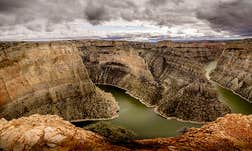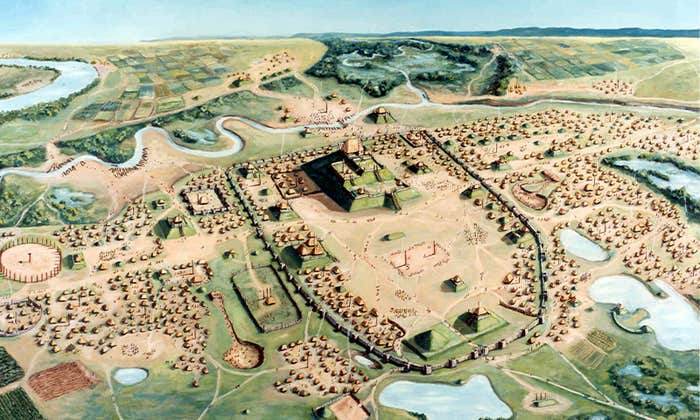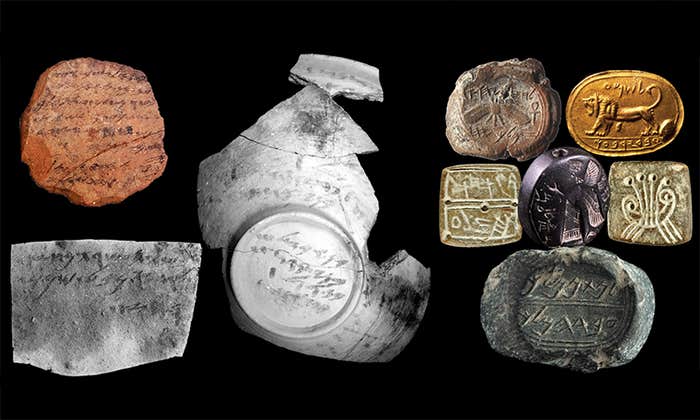In 1800 the weather remained a mystery. The sky was the last part of nature to be classified: a relic of the arcane, chaotic world that had existed before Newton and the Scientific Revolution.
Very few in scientific circles would have heard of William C. Redfield’s name before the publication of his storm paper in 1831. A New York businessman, he had made his name with his Steam Navigation Company. Redfield’s steamers plied up and down the Hudson, from New York to Albany, carrying passengers and freight. Redfield’s success had come through his natural instinct for innovation. In the 1820s, the early years of steam, passengers had been wary of traveling too close to the engines, worried that they might explode—as they often did. Redfield’s solution to the problem had been simple but effective. He had designed “safety barges” for the passengers to travel in, precursors of the railway carriages of the future, drawn in strings behind the steamer. Over time, as safety standards had improved and passengers had become more confident, he had switched his tactics: moving the passengers back into the steamer and filling the barges with cargo.
But Redfield was more than a wily businessman. He had worked as a mechanic in his youth in small-town Connecticut, and he had retained his interest in engineering. He relished the challenge of invention and was often involved in the innovation of his steamers, striving to produce his own simpler, cheaper, and safer forms of apparatus. In time, others had come to appreciate the quality of Redfield’s work. He was that rare blend: a businessman with the knack of getting things done, and an inventor with an independent mind and a Yankee love of detail.
Traveling on a steamer from New York to New Haven one day in 1831 Redfield chanced to meet Denison Olmstead, professor of mathematics and physics at Yale. Spotting Olmstead on deck he had approached and “modestly asked leave to make a few inquiries” about a paper Olmstead had recently published on hailstorms in the American Journal of Science. Soon Olmstead and Redfield were talking about storms and it was then, for the first time, that Redfield unveiled his theory of whirling winds. It was a pivotal moment in the history of meteorology.
The whole mechanics of a storm could be reproduced in any house in America at any time, with apparatus no more sophisticated than a cup of water and a spoon.
Redfield had devised this idea a decade before, after the “Great September Gale of 1821.” The gale—as the hurricane was then called—had sparked panic right along the northeastern coast, causing a storm surge that had flooded the New Jersey coastline as well as several streets on Manhattan Island. In the days afterward Redfield had been out walking with his son in rural Connecticut, which had been equally affected. He noticed that near Middletown, in the center of the state, trees had been blown over toward the north-west. But in neighboring Massachusetts the trees had fallen in the opposite direction, pointing toward the southeast. Redfield took this as proof that in just 70 miles the winds had reversed direction. To check his facts, he had collected newspaper reports and soon had sketched the path of the storm. It was then that, in Olmstead’s words, “the idea flashed upon his mind that the storm was a progressive whirl-wind.”
Not having any connection to the scientific establishment, Redfield kept his ideas to himself until his chance meeting with Olmstead in 1831. Intrigued, Olmstead persuaded him to write an article on the subject for the American Journal of Science. Redfield agreed, on the condition that Olmstead revise the manuscript and oversee its production. Several months later, Redfield’s article was published.
“Remarks on the Prevailing Storms of the Atlantic Coast” appeared in the July 1831 issue. Redfield, hitherto unknown, set out his case confidently. He progressed in logical steps: defining simple terms, distinguishing between winds, calms, storms, and hurricanes, “a wind or tempest of the most extraordinary violence. It has been stated as a distinguishing characteristic of hurricanes, that the wind blows from different points of the compass during the same storm.”
It was this confusion, Redfield announced, that he set out to explain. Using the September Gale of 1821, he presented his case like a prosecution barrister: noting where the storm had been at a specific time, revealing details of where the winds were blowing. He supported his claims throughout. “If our position be conceded then it is no longer difficult to explain the paradox, or mystery, which otherwise pertains to the phenomena exhibited by this storm … We can discern the reason why, in seamen’s phrase, ‘a north-wester will never remain long in debt to a south-easter.’ ” He showed that the gale had begun in the West Indies on September 1, then had curled up along the coast, over Charleston in South Carolina and then Norfolk in Virginia and Delaware before thundering across New York. All the while the wind blew from different points of the compass, a fact he illustrated with an accompanying map.
This wasn’t all. Redfield claimed his whirlwind theory solved the century-old barometric conundrum. He asked the readers to perform a simple experiment:
Let a cylindrical vessel of any considerable magnitude, be partially filled with water, and let the rotative motion be communicated to the fluid by passing a rod repeatedly through its mass, in a circular course. In conducting this experiment we shall find that the surface of the fluid immediately becomes depressed by the centrifugal action, except on its exterior portions, where owing merely to the resistance which is opposed by the side of the vessel, it will rise above its natural level, the fluid exhibiting the character of a miniature whirlpool.
If true, Redfield had not only explained away the lowering reading that accompanied the center of a storm, he had also demonstrated why the barometer should up in the moments before it arrived. The whole mechanics of a storm could be reproduced in any house in America at any time, with apparatus no more sophisticated than a cup of water and a spoon.
For the first time, too, Redfield had demystified the eye of the storm—that moment of comparative and eerie quiet when the wind died away. According to his theory this was the vacuum at the core of his whirlwind.
James Espy was born on May 9, 1785 in Westmoreland County near Pittsburgh in western Pennsylvania, just east of the Ohio River. This was frontier land, an uncertain, dangerous territory. While Espy was in the crib United States troops were still marching west to Fort Washington to quell uprisings by Shawnee and Miami Indians. News from the wars filtered back in terrifying dispatches. Murderous ambushes, scalped soldiers, raids—this was Espy’s childhood world, far away from the settled east coast where the majority of the population lived in tight, secure pockets. It was a nomadic childhood, too. As the troops advanced west, so the Espy family followed—first to the Miami Valley in newly admitted Ohio and then on to the vast savannahs of the Bluegrass region of Kentucky. It was there that Espy displayed early signs of the conviction that was to characterize his life. Antagonized by slavery on the tobacco plantations after he finished a law degree at Transylvania University in Lexington, he resolved to leave the frontier for good.
Espy was ambitious and fiercely determined. Having progressed quickly through academic ranks, by the 1830s he had become head of the classics department at the Franklin Institute in Philadelphia. There Espy worked alongside Professor Alexander Bache, the great-grandson of Benjamin Franklin and future professor of natural philosophy at the University of Pennsylvania. To Bache’s mind he was “one of the best classical and mathematical instructors in Philadelphia.” His talents did not end there. In the late 1820s he had discovered his great passion: meteorology.
Initially Espy’s meteorological speculations were confined to short, niche papers discussing the daily fluctuations of the barometer. But using his position at the Franklin Institute, he soon established himself as an authority. By 1834 he had risen to become the chairman of a joint committee of the American Philosophical Society and the Franklin Institute, formed to analyze storms. One of the key ambitions of the committee was to collect atmospheric data, and Espy eagerly set to work, searching for potential correspondents. He wrote to government officials, college professors, lawyers, and journalists in towns and cities across the states, petitioning them to keep weather journals. Espy cajoled his correspondents to record the wind direction and the “character of clouds” three times a day. No one had done anything like this in America before. Soon Espy had 14 regular weather diarists sending him data from Maine in the north to Tennessee in the south. In recognition he was elected a member of the American Philosophical Society, a sign of a man on the rise.
He had shown that the atmosphere functioned according to strict mathematical principles, with water vapor acting like blood being pumped around the human body.
Above all, Espy had one specific instruction for his correspondents. “We also particularly request,” he wrote, “that if you hear of any storms occurring in your neighbourhood, you will collect all the information concerning them in your power.” Espy had a reason for making such a request. He had read Redfield’s essays in the American Journal of Science with increasing skepticism. Could storms really be great whirlwinds? This seemed to run against everything he had deduced in his own calculations. With the data from his network as proof, by the early 1830s Espy was already plotting to catch Redfield out.
By 1836, it was seven years since Espy had begun to formulate his own theories. Later he would describe his meteorological awakening in grandiose terms. It had come in two distinct stages. First when he was reading an essay by the British meteorologist and chemist John Dalton:
I was much struck with one of his results; namely, that the quantity of vapour in weight, existing at any time in a given space, could be determined with great accuracy in a few minutes, by means of a thermometer and a tumbler of water cold enough to condense on its outside a portion of the vapour in the air. It occurred to me at once, that this was a level with which the meteorologist was to move the world.
Excited, Espy had begun a forensic analysis of vapor. It turned out to be a fruitless enquiry. He later wrote of the labyrinth of contradictions he encountered as he battled to explain how water remained suspended in air. Here he floundered until his second burst of inspiration—a moment on which his life shifted. It came while he was studying the precise moment when vapor condensed into the droplets that formed a cloud. Espy focused on what he termed the “latent caloric”: hidden energy trapped inside vapor as it underwent the change in state from a solid to a liquid and from a liquid to a gas. What Espy discovered startled him:
The result was an instantaneous transition from darkness to light. The moment I saw that a rapidly forming cloud is specifically lighter in proportion as it becomes darker, a thousand contradictions vanished, and the numerous facts, ‘a rude and undigested mass,’ which had been stowed away in the recesses of my memory presented themselves spontaneously to my delighted mind, as a harmonious system of fair proportion.
What Espy had realized was of crucial importance. The sudden liberation of the vapor’s “latent caloric” (today called latent heat) explained how the clouds expanded outward and formed distinct shapes. He conceived an atmospheric vision of invisible columns of air rising upward like modern-day fuel pumps to feed the clouds with condensing water vapor. This process completed a vital link in what we today call the hydrological cycle. He had shown that the atmosphere was not bound together by an electrical field or agitated into action by fumes. Instead he had discovered that it functioned according to strict mathematical principles, with water vapor the essential component in a circulatory system—like blood being pumped around the human body.
Studying water vapor was nothing new. Ever since René Descartes had challenged the orthodoxy that all invisible gas was air in the 1630s, philosophers had considered the study of vapor an important enquiry. Descartes had argued that vapor existed independently of air, and that it somehow had the ability to rise upward. But it was difficult to explain where it got its buoyancy from. And, from there, more troubles emerged. Once vapor had transformed into cloud droplets, how did it stay afloat? If clouds contained thousands of metric tons of water, how could they possibly be suspended in the sky when water is hundreds of times denser than air? For centuries this had been one of nature’s great paradoxes.
The most widely held theory was that clouds comprised minute particles called “vesicles,” fragments with their own distinct gravity that kept them buoyant. Vesicles were “innumerable small globes filled with damp air, analogous in some way to soap bubbles,” or better imagined as minute aerial zeppelins that roamed the skies. The Swiss physicist Horace-Bénédict de Saussure claimed to have seen vesicles on an Alpine hike, the drops floating “slowly before him, having greater diameters than peas, and whose coating seemed inconceivably thin.” It was a vivid image, but the theory was dogged with problems. How did vapor transform into vesicles? Where did this gravity-defying power come from? What were vesicles? And how did they transform into rain, snow, or hail?
The accepted theory of rain was proposed by James Hutton to the Royal Society of Edinburgh in 1784. Hutton believed rain was caused by the “mingling together of great beds of air of unequal temperatures, differently stored with moisture.” The mixture of these beds of air created what Hutton called an atmospheric imbalance that resulted in rain. Espy’s idea, though, was different from the start. He concentrated on columns of rising air. This notion of an ascending current had appealed to several scholars before, particularly the French physicist Marcellin du Carla and more recently another Frenchman, Joseph Louis Gay-Lussac. Both du Carla and Gay-Lussac had published papers on the subject, catching the attention of the German geologist Leopold von Buch. In turn von Buch had told the Berlin Academy of Science that “the principle of ascending currents of air should really be called the key to the whole science of meteorology.”
Espy had witnessed these currents himself. A member of the Franklin Kite Club of Pennsylvania—an organization with impeccable meteorological credentials—he had often noticed how his kite was tugged up by rising air. These columns (today known as thermals) were most prevalent on days when the cumulus clouds formed “rapidly and numerously.” The updraughts become “so familiar,” he wrote, “during the course of their [the kite-flyers’] experiments that, on the approach of a columnar cloud just forming, they could predict whether it would come near enough to affect their kites.”
Certain he had unlocked the process behind the formation of clouds, Espy was confident enough to dispel the old belief that they floated at all:
It is not necessary to inquire, as is frequently done, by what power are the clouds suspended in the air, unless it can be shown that they are suspended, of which I think there is no probability … We have every reason to believe … that the particles of cloud begin to fall through the air … as soon as they are separated from the up-moving column of air, by means of which the cloud was formed.
By now Espy was envisaging an entire dynamic weather system: ascending currents of warm air drawing up vapor, the vapor condensing at a specific height, expanding and forming clouds, and then the water droplets falling back to earth. Under different atmospheric conditions, Espy realized, this system of vaporous circulation was capable of producing every type of precipitation: rain, snow, or hail. His task then became to calculate specific circumstances. What temperature was needed to produce snow? What expansion of water vapor would be required to generate a 20-mile-wide hailstorm?
He worked at these calculations in the backyard of his Philadelphia home in Chestnut Street. His background as a mathematician made him unusually adapted to this work. Everything became a problem to be solved through minute study. His elevation to chairman of the Meteorological Joint Committee gave him the opportunity to model his theories using real-life data and he sought to augment this data store whenever he could. In July 1835 he raced to the scene of a whirlwind in New Brunswick, determined to write up the case. William Redfield, too, visited the site in the hope of gleaning evidence for his theory of whirling winds. Although Espy did not meet Redfield he was well aware of his ideas. He had studied them in the scientific journals. Espy bided his time, saying nothing.
Redfield’s idea of circular winds was clearly perplexing. Espy could find no reason why winds should dart about the central axis of a storm. Eventually he concluded that Redfield was wrong. A more logical answer, Espy reasoned, was that winds rushed toward the central column at the core of the storm as air in a room would be drawn in toward a burning fire—cool air from beneath replacing the warm heat traveling upward. The science behind this idea was sound. In a powerful storm, Espy thought, the effect would simply be magnified.
Espy chose to unveil his ideas in the inconspicuous Transactions of the Geological Society of Pennsylvania in 1834. It was a cautious move, testing the water. Another two years passed until he was ready to bring his case before the wider scientific community, in April 1836. He now turned to his spiritual home, the Journal of the Franklin Institute. He aimed to impress. Full of confidence he announced:
Gentlemen, I send you now, for publication, the first of a series of essays on rain, hail, and snow, water-spouts, land-spouts, winds, and barometric fluctuations, in which, I hope, it will be found that I have successfully traced these phenomena to their true causes … I promise the reader, in advance, that he will find developed in the following essays, a law in meteorology, which, founded on acknowledged dynamical principles, explains at once, with a simplicity which nothing but nature can equal, all the seven phenomena mentioned above.
The importance of this law will be readily admitted, when it is understood that by it may be known whether there is a great storm raging at any time within four or five hundred miles of the observer, and also the direction of that storm, with the means of avoiding it, if the observer is at sea.
Yours, James P. Espy
It was a grandstanding announcement, the words of someone who did not doubt himself; not for a moment. Espy set out his case with a study of hail. He showed the evolving path of water vapor: rising from the earth, freezing in the atmosphere, falling over a specific area. He supported his argument with press reports and using his powers of rhetoric learned from his 25 years of teaching.
So bold was Espy’s theory that it instantly caught attention. Admiring articles appeared in the press and were republished across the Atlantic. For his Theory of Hail he was awarded the prestigious Magellanic Prize by the American Philosophical Society. Suddenly the Pied Piper of American science, he turned his pen to a new purpose: to destroy all opposition to his ideas. This included Redfield and his concept of whirling winds. He resolved to take an axe to Redfield’s theory and chop it down piece by piece.
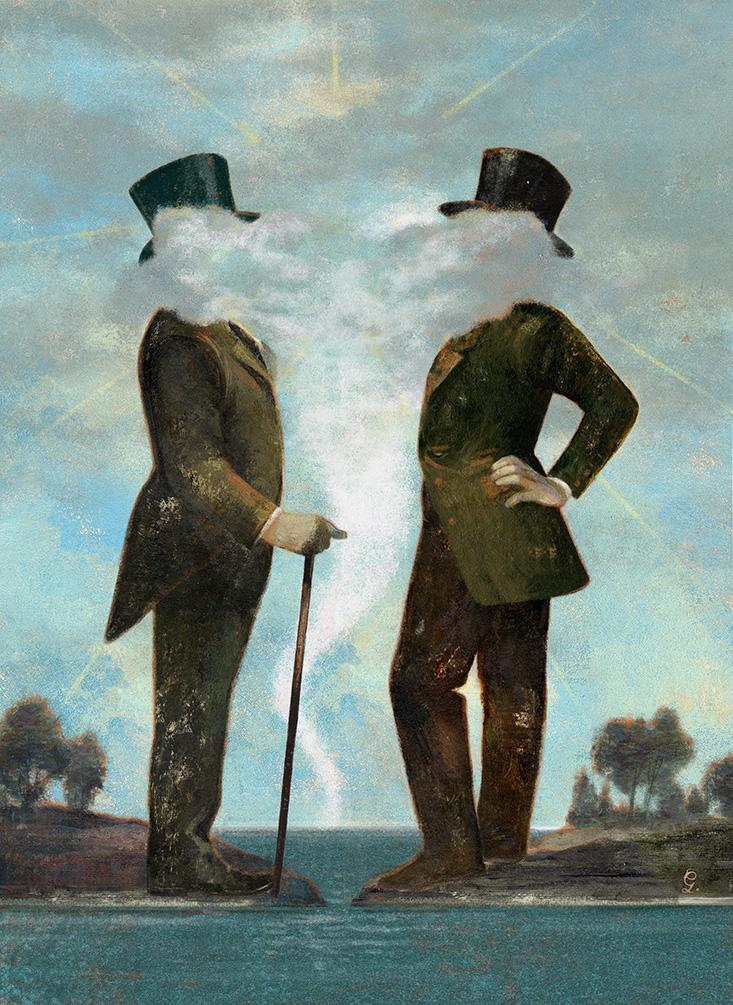
Redfield first became aware of James Espy in early April 1835, though he did not quite know it. His attention was caught by an anonymous article, “Notes of an Observer,” that had been published the previous year in the Journal of the Franklin Institute. The piece was a critique of one of Redfield’s articles for the American Journal of Science. Couched in the deferential style of the day, it had begun by praising Redfield’s nimble prose as well as his “laborious” efforts on behalf of science. Then it changed tack. The anonymous author revealed that he was disturbed by a number of Redfield’s assertions. They were, he pointed out, “so anomalous and inconsistent with received theories” that he could not put entire trust in them, “and shall continue to doubt until I have the most certain evidence of the facts.”
The “Notes of an Observer” was a short article with enormous incendiary capacity. Issues like this were often chewed over in public but by several measures the piece fell short of the strict norms of the day. Firstly it was published in a journal unconnected to Redfield—making it likely that he would not see it and thus robbing him of the right of reply. Secondly it skipped over the central tenet of Redfield’s argument. No mention, however brief, was made of his theory of circular winds. Such silence gave the piece a contemptuous air, bound to nettle. It was no surprise that Redfield remained entirely unaware of it for 14 months until, in his own words, he chanced upon it. Aggravated, he sought to swat it away. Keen that his prolonged silence should not be misinterpreted, on April 8, 1835 Redfield sat down at his desk in New York City and dashed off a reply. The author of the anonymous piece was James Espy and this would be far from the end of the matter. It would mark the opening volley in a long war of attrition.
Redfield expressed his objections with caustic lucidity. He pulled Espy’s analyses apart storm by storm.
Redfield’s response was curt. He sent it straight to the editor of the Journal of the Franklin Institute. He admitted that his claims about barometric variations in Edinburgh were wrong but brushed aside the other criticisms. Redfield was particularly scornful of the suggestion that his idea was speculative and “inconsistent” with known science. Why should an idea be rejected or doubted for no better reason than being inconsistent or eccentric? “Before we consent to give credence to new theories it may be well, perhaps, to inquire when and in what manner the ‘received theories’ in meteorology have been demonstrated to be true.”
Redfield asserted that he had read a sufficient amount to convince him of the folly of studying the flow of heat. He dismissed this as an “error into which the whole school of meteorologists appear to have fallen.” Heat flow, Redfield wrote, might plausibly affect local weather—land or sea breezes—but it was far from being the prime factor in macro-atmospheric events. He repeated his assertion that storms were whirlwinds and, he added, this is caused by “the rotative motion of the earth upon its axis.”
Redfield’s thinking had progressed. No longer did he restrict his atmospheric investigations to storms: He was projecting them on to a bigger scale. He was beginning to see the sky as a theater of moving parts governed by Newtonian laws of force and attraction. Essentially his ideas were drawn from his background as a mechanical engineer. He thought the atmosphere had a collection of great cogs and wheels like those of his steamers or George Stephenson’s revolutionary locomotive Rocket.
There matters rested until April 1836, when Espy’s series of meteorological essays started to appear. At first Espy concentrated on establishing his own ideas but by July he was ready to attack Redfield openly. In “Examination of Hutton’s, Redfield’s and Olmstead’s Theories,” Espy set about dismantling Redfield’s ideas with the confidence of a man triumphant. No longer firing his arrows from the shadows, he was happy to attack his opponents directly. His critique of Redfield focused on the central claim of his theory: the evidence of the 1821 September Gale. “Now it will appear by little reflection that all these facts agree with the idea of an upward vortex more consistently than with a horizontal whirlwind,” he pointed out. What would happen, Espy argued, when the winds that Redfield claimed rushed at each other met in the atmosphere? “All the facts lead to the conclusion that in the storm at least the wind in the neighbourhood of the storm blew directly towards the centre and if so, it follows beyond all doubt, that there was an upward vortex in the middle of the storm.”
Not only was Espy’s prose bold, it also had a pompous edge. Academic discourse was governed by the same strict code of gentlemanly civility that dominated intellectual society, from politics to religion. At times Espy seemed waspish and condescending. None of his barbs would have cut deeper than the claim:
If Mr. Redfield should perceive that all the interesting facts which he had with such laudable industry collected, are fully explained by a theory which accounts also for the rain, I am sure he will not be very tenacious of his horizontal whirlwind; especially when he does not pretend to show that either the whirlwind is the cause of the rain, or the rain the cause of the whirlwind … I should be proud to list Mr. Redfield under the banner of a true theory.
But Espy was about to discover that Redfield was no timid opponent. He hit back seven months later, in February 1837. Writing in the Journal of the Franklin Institute, he titled his piece bluntly, “Mr Redfield in Reply to Mr Espy on the Whirlwind Character of certain Storms.” He announced that he had no wish to defer to Espy’s theory of an atmospheric chimney. Instead he stood by the validity of his data and revealed that he had much more evidence than he had yet published. Redfield’s reply covered 15 scornful pages and stretched to around 10,000 words.
Already both men were entrenched. To Espy, Redfield’s position was weak. He had no overarching theory, just a mere collection of nebulous observations about tides, and his great claim of whirling winds did not fit with any facet of known science. To Redfield, Espy was plain wrong. Enamored with his idea he had grown too cavalier, too bombastic, and as a result he had closed his mind to the realities of fact. “Mr Espy says that steam is the moving power in storms,” Redfield wrote, certain he had caught Espy out on a point of logic, “but there is a much smaller supply of this moving power in winter than in summer and yet the greatest storms appear in winter.” How could it be?
Espy ignored the point. And while a resolute Redfield vowed to produce more data to consolidate his position, Espy opted to take his ideas out on the road. The first of his lectures took place in November 1836 when he spoke before a “large and respectable body of merchants, under writers, masters of vessels and others” at the Exchange in Philadelphia. “The views of the Lecturer are not only new, but exceedingly ingenious and interesting, and calculated to convince any one who had not hitherto examined the subject,” reported the New Bedford Mercury.
Espy’s Philadelphia lecture was a prelude to a tour of the popular Lyceum circuit over the next four years that would take him to Harrisburg, New York City, Nantucket, Boston, and a host of other locations. Standing on the stage with his charts and his nephelescope cloud chamber, he employed his gift as an orator and his natural charisma to make science accessible for a wide audience, logically explaining his arguments and citing his position as chairman of the Joint Committee as proof of his authority. It was a formidable combination. Glowing reviews followed in the local newspapers, and the appearances had the secondary benefit of boosting the size of his weather network. On April 1, 1837, the legislature allocated a $4,000 grant to a state-wide, Espy-led meteorological investigation, and in January 1838 the Pennsylvanian representatives were handed a petition that called for Espy to be appointed as official meteorologist of the state.
His ambitions did not stop there. With his friend Professor Bache poised to depart on a European tour in 1836, Espy wrote, “Please present to Dalton, Faraday, Brewster, Forbes, Airy, Apjohn, Daniell, Whewell, Scoresby or if not convenient to them to any others you may find interested in the science, those essays of mine already published on the Theory of Rain, &c.” Europe was an exciting proposition. Espy knew that in America he had already gained an influential power base. But to plant his theory on an immovable footing he needed the backing of at least one of the great European men of science, a name whose reputation would dazzle. What such support could mean—funding from Congress, moral authority—he could only guess. Espy knew that a meeting of leading British scientists would take place in Newcastle upon Tyne in August 1838 and with Bache as his ambassador he hoped to have his ideas presented to the judges that mattered. But, unknown to Espy, his wily combatant Redfield would soon outflank him. Waiting in the wings Redfield had acquired an ally of his own who was about to tip the scales. His name was William Reid.
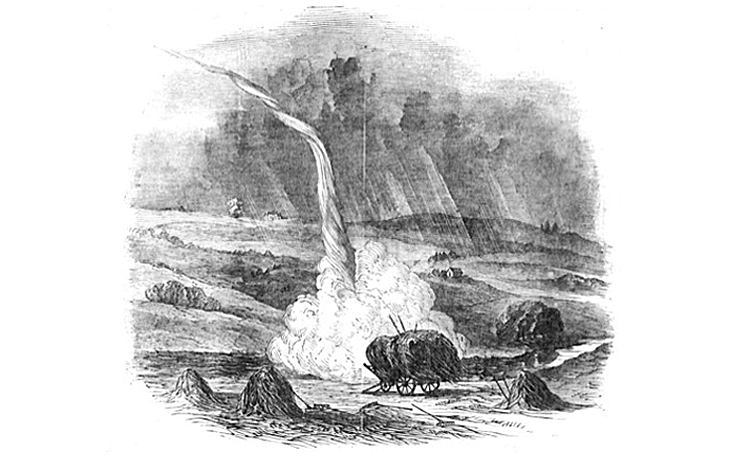
By 1838 Reid had been researching storms for six years. He had worked with military precision, exploiting contacts during his spell in the Caribbean to locate as many sources as possible. The notes had piled up, and by the start of 1838 he had started to draw them together. By February 1 he had progressed enough to introduce himself to Redfield. He began a letter to Redfield in New York, telling him he had read “with good attention” his ideas on storms and that he had been “impressed with the importance of the subject.” He said he was planning to publish a paper on storms for the Corps of Engineers and he sent him some example charts. “I think what I am giving will be gratifying to you; and I beg leave to say it will give me great pleasure to hear from you on the subject.”
It had taken two months for Reid’s letter to reach New York, but when he read it Redfield was delighted. “It affords me much satisfaction to find that inquiring into the true nature of storms is beginning to excite interest on your side of the Atlantic, and the observations which a residence in the West Indies has afforded must give you peculiar advantages in pursuing the subject.” It marked the beginning of a long and warm friendship. During the spring and summer of 1838 Reid and Redfield corresponded often.
They shared data from ships’ logs, newspaper cuttings, and plans for publishing ideas. Redfield congratulated Reid on the quality of his charts, which he thought “beautifully executed.” When Reid mentioned that he had noticed some of Espy’s essays on sale in London, Redfield cautioned him. “I am informed that he is an ardent and at the same time an amiable man; but having examined his evidence in the cases on which he relies, and collated it with such facts as are in my possession, I feel justified in stating that not one of his cases can be sustained.”
Espy had formed a new pet idea and had started to advertise it at his lectures. He was claiming to be able to create rain.
The friendship between the men was already blossoming by August 1838 when Reid decided to travel, by “some degree of accident,” to the annual meeting of the British Association for the Advancement of Science. Some of the pre-eminent minds of British science steered its executive committee, including Sir John Herschel, the exceptionally able, famous son of Sir William Herschel. Now 46 years old, Herschel had already founded the Astronomical Society, served as secretary of the Royal Society, made huge contributions to both physics and astronomy and written his fabulously successful Treatise on Astronomy. Others on the committee included Sir David Brewster, the Scottish “Father of modern experimental optics” and inventor of the kaleidoscope, and John Frederic Daniell, respected for the Daniell cell battery as well as his hygrometer. The Association meeting for 1838 was to be held in Newcastle upon Tyne—in an effort to get away from London a different provincial town was chosen each year—and more than 2,000 tickets had been sold to the lectures that were to be held on a range of topics.
Among the speakers was William Reid who, by chance, had been asked to present a lecture on his storm research. His lecture on Monday, August 20 before a packed crowd turned out to be one of the highlights of the week. Reid introduced Redfield’s theory of circular winds, explaining how reading the article had set him off on his quest. It was the first that many in the room had heard of Redfield and Reid explained how he had endeavored to test the theory against as many historical examples as he could find. “The more exactly that this was done,” Reid revealed, “the nearer was the approximation to the tracks of a progressive whirlwind.” One by one Reid presented a series of eight historical examples. “My object is not to establish or support any theory,” he said, “but simply to arrange and record facts.” It was an enterprise of pure Baconianism, free from faction and bias. His audience loved it. He left them with a final, tantalizing finding: that while all the storms he studied in the northern hemisphere blew in an anticlockwise direction, he believed all those in the southern hemisphere revolved in the opposite way. His theories, he told the audience, were collated in his forthcoming book, An Attempt to Develop the Law of Storms.
Reid’s Law of Storms turned out to be a highly practical work crammed with expert research. It included tips for mariners, accounts of exemplary storms, and cut-out diagrams, charts, and real-time maps for reference in a storm. It was reviewed enthusiastically.
When his copy arrived in New York in October, Redfield was thrilled. “It is just such a work as I have long wished to see undertaken by one who comprehended the subject and had leisure and means to establish the subject in a detailed manner.” An unexpected hit, the book also managed to catch the attention of Whitehall’s political elite. Reid was appointed governor of Bermuda, as it was “a position peculiarly favourable for carrying on his valuable researches.” More developments followed. On January 3, 1839, Reid wrote to Herschel revealing that Lord Melbourne’s government was putting its might behind his project. Lord Glenelg, Secretary of State for War and the Colonies, had told British governors across the globe to keep weather journals and to record any unusual meteorological phenomena. Results were to be transmitted to the Colonial Office every six months. The Admiralty had acted also. As well as purchasing a number of Reid’s books to distribute among intelligent officers, they had ordered ships’ captains as well as ports, harbors, and lighthouse keepers to begin observations, too.
Reid’s appearance at the British Association was a watershed moment. Years of patient research had combined to show Britain’s scientific community what was possible. In the months before he left for Bermuda he became a familiar name in the newspapers. His election to the Royal Society was fast-tracked. His nomination slip read, “Lieutenant Colonel William Reid, CB, of the Royal Engineers a Gentleman much attached to science and author of a Work On the Law of Storms.” Among his proposers were Sir John Herschel, future president Edward Sabine, polymath William Whewell, and the old weather hand Francis Beaufort.
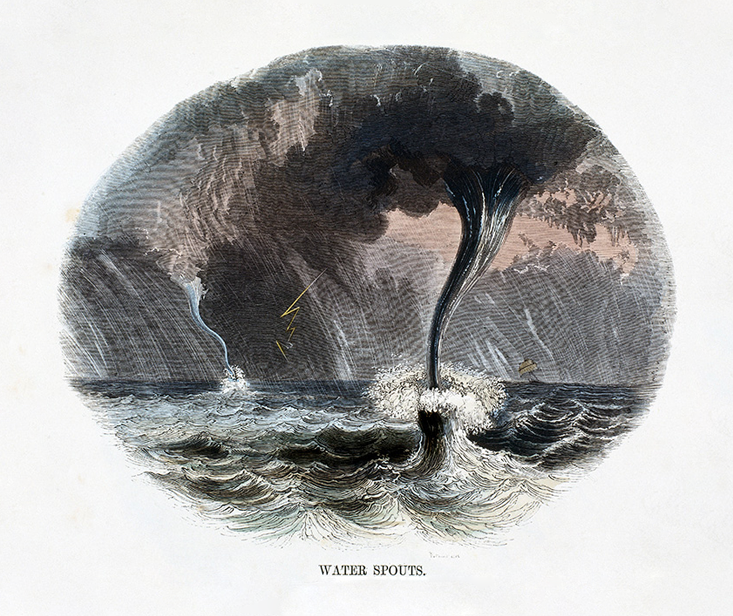
After three years in the ascendancy in America, Espy’s ideas had been swept away with barely a whisper in the halls of European science. News of Reid’s triumph traveled across the Atlantic along with a copy of Reid’s Law of Storms. Espy was shocked. Expecting to hear that his theories had been heard and praised, instead he learned that even Sir John Herschel had sided with Reid and Redfield. Espy responded in indomitable style. He sought to discredit the data in Reid’s book, twisting it to fit his own model rather than Redfield’s.
He did not tolerate conflicting facts and derided them as errors that needed stamping out. This was too much for Redfield, who by now was monitoring the Journal of the Franklin Institute like a hawk. For some time he had hoped to settle the dispute. “I have contented myself thus far with an attitude towards him which is strictly defensive,” he wrote. Another time he had even knocked at Espy’s door in Philadelphia to introduce himself. Unfortunately, Espy was out.
In the spring of 1839 Redfield’s tone changed. He wrote apologetically to Reid, “Mr Espy continues to busy himself with his theory of aqueous condensation. His late amusements, as I am informed, have given offence to the savants of Philadelphia to whose friendship & support he is mainly indebted.” Another time he raged, “It is a matter of sincere regret with me that our friend Espy is not content with his own conclusions … relating to the storm of 1821, as you have seen in the March number of the Journal of the Franklin Institute. To this I have felt it necessary to reply and speak with some freedom as well as candor of his general course of proceeding in this matter, all of which I was desirous to avoid.”
It was not long before Espy felt the full force of his invective. In July 1839 two waspish articles appeared in the Journal of the Franklin Institute, the one true beneficiary of the brouhaha. Redfield expressed his objections with caustic lucidity. He pulled Espy’s analyses apart storm by storm. He derided Espy’s mission to “explain nearly all the physical phenomena of the atmosphere by the theory of aqueous condensation” and regretted that he had been supported by “plausible but erroneous inductions” and “friendly, though perhaps injudicious support and announcements from highly respectable sources; and aided also by the favor and guardianship of the Philadelphia press.” He lampooned Espy’s “modest” announcement of April 1836 and complained that he had spent far too much effort trying to fit the facts to the theory rather than the theory to the facts. Espy’s attempt to connect every single atmospheric process to his ideas, Redfield complained, had become “not unlike that of him who in essaying to climb should commence at the last and highest step in the ladder.”
No longer friendly joshing, by now the furor was generating national coverage. The Knickerbocker, perhaps the most influential literary magazine in America, rejoiced in Redfield’s assault, proclaiming Espy’s ideas “essentially demolished.” Suddenly Espy’s reputation was in danger of unraveling. Partly this was due to Redfield’s exposé but it was also due to something even more improbable. Over the last few months Espy had formed a new pet idea and had started to advertise it at his lectures. He was claiming to be able to create rain.
Espy could have hardly chosen a more inflammatory path. Many had toyed with meteorological theory over the years, but few had aspired to command the elements themselves. But while the rain-making idea seemed ridiculous, to Espy it was merely a logical extension of his thinking. Now he had demonstrated how clouds and rain were formed, what better than a practical demonstration to prove him right? The 1830s had seen a craze for public experimentation most recently with early demonstrations of Daguerre’s photographic process. For a country growing increasingly used to ground-breaking inventions—the decade had already seen the appearance of ether-based anesthesia, grain elevators, a hand-cranked ice-cream machine, the first combine harvester, a steam shovel, and a lockstitch sewing machine—the idea of creating rain tapped into the spirit of the age. Anything was possible.
Espy reasoned that if he produced a steady, controlled column of ascending air it would draw up the atmospheric vapor. When this vapor reached the ideal altitude it would condense into water. All that was needed was to produce a steady column of heat and the atmosphere could be modeled artificially. In some places this already happened, Espy told his audiences. He cited London—the most populous city on the planet—as an example, claiming that the hundreds of thousands of billowing chimneys combined to create a rainy micro-climate in the Thames Valley.
The American government was currently overseeing a vast process of deforestation in the newly settled states and Espy seized on this. If the government would let him start strategically placed fires in the west, he could exploit the prevailing winds to bring rains to the eastern states. The benefits would be immense. Canals could be filled with water to prevent drought. Farmers would be able to manage precipitation to produce perfect crops.
At the start of 1839 Espy approached Congress, proposing to test his idea. The plan excited and terrified in equal measure. The Philadelphia Gazette published a succinct appraisal of the dilemma:
If our indefatigable friend Espy should succeed in establishing his theory with respect to the rains he will have effected a more wonderful improvement upon the weather, which, it must be confessed, is often sadly deficient in rectitude of conduct. The times of drought and ‘some potatoes’ will cease—for every farmer will have it in his power to burn a pile of wood, and grow his own thunderstorm. Think of taking out the copyright of a tempest or a patent for a whirlwind! The danger is, we think, if Espy succeeds, and the modus operandi of his system becomes known, that any one who likes will take possession of it, and create much mischief thereby—Naughty persons would cultivate storms from malice aforethought;—and they would come in time we fear, to conflict with the freedom of elections. The fires of party spirit would result in a deluge; and success, irrespective of the merits of measures or men, would crown the side that could make the most water! The progress of storms may yet be so great that a man may travel whithersoever he listeth by fastening to his carriage front a huge boiling tea pot, on wheels, and when this shall come to pass, and men will have it in their power to fling tornadoes or chain lightning at each other, we shall begin to tremble for the safety of our republican institutions.
Elsewhere Espy’s proposal elicited different responses. In February 1839 the New Hampshire Sentinel politely wondered whether “Mr Espy would put his weather machine in motion and give us a good storm of snow—just enough to make good sleighing and no more—we would thank him in the name of the thousands of people who have not heard a set of sleigh bells this winter.” In July the New Orleans Times-Picayune revealed, “On Friday we prayed for a ‘forty horse Espy power’ when lo! on yesterday morning, while yet in our gown and slippers, performing our diurnal ablutions, the rain descended in torrents, and with a force and velocity as if impelled by a power unknown to modern mechanics. Flash! flash! flew the lightning—and Boom! boom! went the thunder.” Indeed some wit in the Times-Picayune’s newsroom had developed a special interest in the story. The writer tracked Espy’s lecture tour, noting the strange frequency with which his arrival in a town was preceded by a sharp shower. The paper started to refer to Espy as “Professor of Thunder and Lightning.” Once Espy even inspired the Times-Picayune to poetic rapture: “I feel myself dissolving now—up in the clouds that’s plain! Where’s Mr Espy? In thin air, Diffused—evaporated, Without him, ne’er again I fear, To be precipitated.”
Benjamin Peirce, the Harvard mathematician, said: “Even storm kings are intolerable in a republic.”
His friends realized that Espy was risking his reputation. He seemed to have forgone the sure and steady ground of science for a hopeless, hubristic scheme. His rain-making claims certainly brought him attention—the English essayist William Hazlitt once wrote that “The world loves to be amused by hollow professions, to be deceived by flattering appearances, to live in a state of hallucination; and can forgive everything but the plain, downright, simple, honest truth”—but was it the type of attention he needed? Bache ruminated on the “strange course recently taken by my friend Mr Espy,” while another of his circle, Joseph Henry, worried that he sometimes exhibited a “want of prudence.”
But Espy continued. In 1839 he petitioned Congress to back him publicly, asking for a grant of $25,000 in return for making rain over 5,000 square miles or $50,000 in return for an area over 10,000, “or in such quantities as shall keep the Ohio River navigable during the whole summer.” In the middle of a crippling financial crisis, it was no surprise that Espy’s request was turned down. Instead he was left to debate with Professor Olmstead, Redfield’s ally, at a series of public lectures in New York. The lectures were typically heated—both Olmstead and Espy passionate advocates of their ideas. Redfield kept Reid abreast of all this in his letters. “Mr Espy … has lately given a course of lectures in this city, which was rather thinly attended. He maintains a thorough system of newspaper puffing and in this he has full swing, no one being disposed to enter the field as his antagonist.”
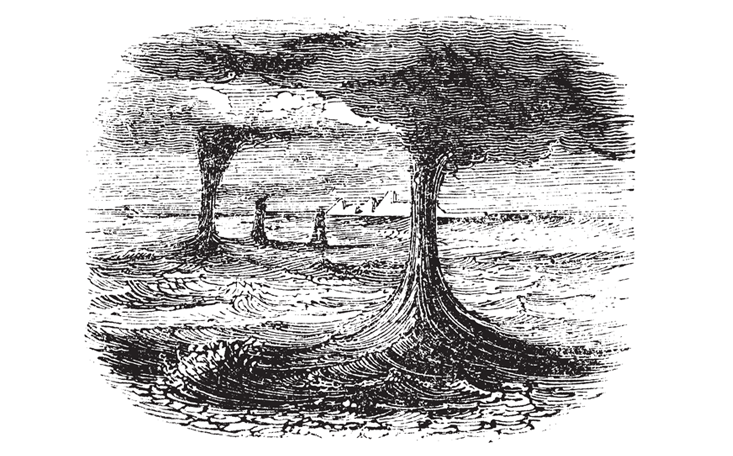
Espy’s aggrandizement was beginning to annoy some. Benjamin Peirce, the Harvard mathematician, moaned about Espy and his “air of self-satisfaction: Even storm kings are intolerable in a republic.” Espy succeeded in also irritating the old president, John Quincy Adams, who observed, “The man is methodically monomaniac, and the dimensions of his organ of self-esteem have been swollen to the size of a goitre …”
Such attacks did not seem to bother Espy, who had exchanged the familiarity of his Philadelphian base for the society of Washington. His efforts were soon rewarded. In August 1842 Congress set aside $3,000 for meteorological observations at military posts throughout the country. As the most prominent man in the field, Espy was chosen to oversee the project, making him, in 1843, the first ever official meteorologist of the United States of America. Espy’s task was to write and circulate reports and to expand the network of weather-watchers.
In 1849, Espy finally had his chance to make rain. He made his experiment in Fairfax County, Virginia, where he set fire to 12 acres of pine forest and waited for the rain. It never came. Thereafter little more is to be found of Espy’s rain-making ideas in the newspapers although in private he explained away the failure of his experiment as the result of interfering factors.
Redfield died on February 12, 1857, a distinguished man in American life, one of the founders and first president of the American Association for the Advancement of Science. The news shocked his friend William Reid. For 20 years the two friends had been in constant communication, writing hundreds of letters, passing on observations about storms right to the end. Reid himself would die the following year, bringing to an end a life which had seen him serve as governor of Bermuda, the Windward Islands and Malta. “His efforts for the improvement of agriculture and education and for the promotion of circumstance were unremitting,” declared Redfield’s son, “and well-earned for him the title of ‘The Good Governor’ applied to him in Dickens’ Household Words.”
Reid and Redfield’s deaths were followed by that of their great foe James Espy in 1860. Espy’s contributions to the infant science in the 1830s had been vital and profound, yet his ambition to be seen as a Newton of the air would never be realized. For all his brilliance, Espy had been hampered by pugnacious perseverance in a theory that was too bold in its extent, and too colorful in its application. More than anything else he would be remembered as Espy the rainmaker—a slight that is unfortunate, but of his own making.
Meteorology had to wait until 1856 for the solution to the storm controversy. It came from a quiet but brilliant mathematical scholar, William Ferrel of Nashville in Tennessee. In “Winds and Currents of the Ocean,” Ferrel explained why the wind should twist around the center of a storm. He demonstrated that this was caused by the rotary motion of the earth, which deflected air moving toward a center of low pressure. Once the earth’s rotation was added to Espy’s theory, a true picture of atmospheric circulation arose. Ferrel based his calculations on the work of a French mathematician Gustave Coriolis, who had calculated the deflective effect of the earth’s rotation. Ferrel’s achievement was to apply this to winds for the first time. It was a joining of the dots that linked observation and theory in an enticing new way. Puzzlingly, it meant both Espy and Redfield had been half right. The winds did rush upward as Espy had argued and they did revolve around a central point as Redfield claimed. Neither Espy nor Redfield, who had spent so much of their working lives in internecine warfare, lived to see their theories joined together. Perhaps it was just as well.
Peter Moore is the author of Damn His Blood: Being a True and Detailed History of the Most Barbarous and Inhumane Murder at Oddingley and the Quick and Awful Retribution. He is a visiting lecturer at City University London, where he teaches nonfiction writing, and was recently the writer in residence at Gladstone’s Library in Hawarden, Wales.
Excerpted from The Weather Experiment by Peter Moore, published by Farrar, Straus and Giroux, LLC. Copyright © 2015 by Peter Moore. All rights reserved.



















